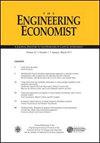利用时变风险规避的随机均值CVaR优化避免动量碰撞
IF 1.2
4区 经济学
Q4 BUSINESS
引用次数: 0
摘要
在动量崩溃的情况下,通常有效的金融资产配置横截面动量策略会产生剧烈的负收益。建立了以CVaR控制风险的随机平均风险优化模型,动态调整CVaR尾部概率和目标函数权重,以及混合矩匹配生成的收益场景。在一个95年的回溯测试中,用我们的方法重新平衡的投资组合比用横截面动量启发式重新平衡的投资组合提供了更高的回报和更低的风险,同时避免了动量崩溃。本文章由计算机程序翻译,如有差异,请以英文原文为准。
Avoiding momentum crashes using stochastic mean-CVaR optimization with time-varying risk aversion
Abstract In occasions called momentum crashes, the usually effective cross-sectional momentum strategy for financial asset allocation produces drastically negative returns. We develop a stochastic mean-risk optimization model featuring CVaR to control the risk, dynamically adjusted CVaR tail probability and objective function weight, and return scenarios generated by hybrid moment-matching. In a 95-year backtest, portfolios rebalanced by our method provide higher returns and lower risk than those rebalanced by a cross-sectional momentum heuristic, while avoiding momentum crashes.
求助全文
通过发布文献求助,成功后即可免费获取论文全文。
去求助
来源期刊

Engineering Economist
ENGINEERING, INDUSTRIAL-OPERATIONS RESEARCH & MANAGEMENT SCIENCE
CiteScore
2.00
自引率
0.00%
发文量
14
审稿时长
>12 weeks
期刊介绍:
The Engineering Economist is a refereed journal published jointly by the Engineering Economy Division of the American Society of Engineering Education (ASEE) and the Institute of Industrial and Systems Engineers (IISE). The journal publishes articles, case studies, surveys, and book and software reviews that represent original research, current practice, and teaching involving problems of capital investment.
The journal seeks submissions in a number of areas, including, but not limited to: capital investment analysis, financial risk management, cost estimation and accounting, cost of capital, design economics, economic decision analysis, engineering economy education, research and development, and the analysis of public policy when it is relevant to the economic investment decisions made by engineers and technology managers.
 求助内容:
求助内容: 应助结果提醒方式:
应助结果提醒方式:


